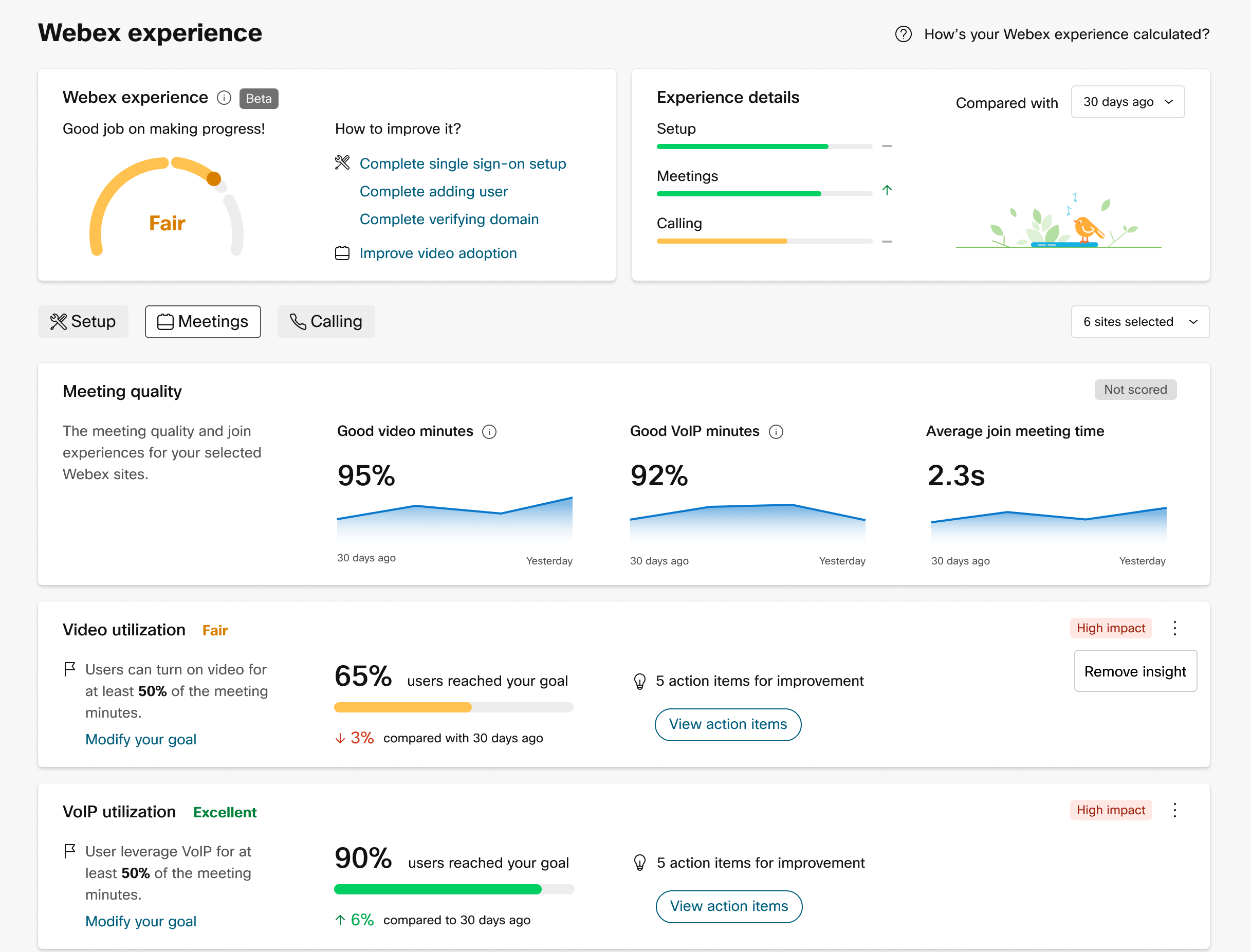
product content designer ⭐ ux writer extraordinaire ⭐ experience & solutions architect
sabrina k. chun
Components with content:
Coach marks/tooltips
Tasks and subtasks
Toast messages
monitoring onboarding made seamless through a personalized tailor-made journey
We had admins do a card-sorting exercise to determine how they’d categorize security setup tasks
We applied the new personalized, outcome-based, and gamified framework, Control Hub as a Coach, to our secondary onboarding feature. Admins are introduced to Webex Experience halfway through the Setup Guide to check their progress with additional setup tasks and adoption goals. Like the previous version of the Getting Started Guide, the old Webex Experience similarly offered fixed goals with action items to complete. But obviously, not all organizations are the same; a medium impact action item could be low or high for someone else.
Even though they’ two connected onboarding features, the experience seemed disparate. Control Hub as a Coach, along with updated content and designs, connected these two features for a more cohesive vibe.
Re-hauling this entire framework started with copy. When I started editing, I was struck by how convoluted and overly complicated this featured seemed, especially the redundant copy. I had to fight to pare it down—an unfortunately common battle—but even my compromises still were overly wordy. Other issues of note:
The info architecture and naming conventions also weren’t entirely clear; for example was it a goal or insight?
Even with the progress bars, the overall tone had a “nice to have” vibe instead of a stronger sense of urgency
To align with the naming conventions I had established for the Setup Guide, I eliminated instances of “insights” and renamed “action items” to “tasks.” An admin will now receive goals based on the Setup Guide’s questionnaire, ranging from advanced meeting configuration to service adoption.
We reexamined the journey map post-purchase and beyond their foundational tasks. We also surveyed our admins for their two most significant outcomes: improving both the meeting experience and security posture.
Expanding this feature meant new naming conventions and categorization
the security goals had 3 levels
we also had to distinguish user types
Updating the self-appointed scores with recommended ones, made it easier
The old experience had tooltips for more information, but this time we added another product tour so the path is clearer than crystal.










